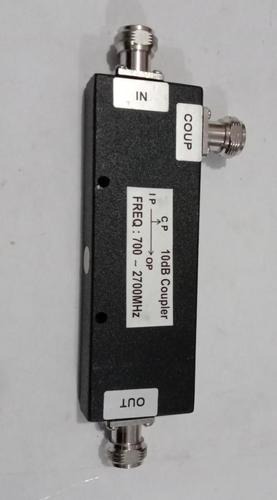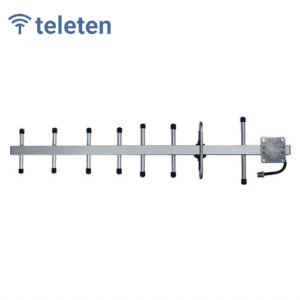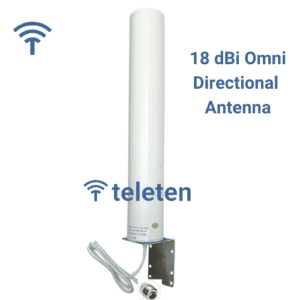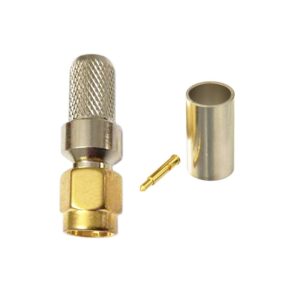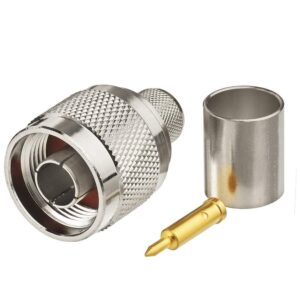Frequency Range: 698 MHz to 2700 MHz
The coupler operates efficiently within this frequency range, covering several communication bands including cellular and Wi-Fi frequencies.
Coupling Factor: 10 dB
This indicates that the output signal is attenuated by 10 dB compared to the input signal, meaning the coupled signal power is about 1/10 of the input signal power.
Directivity: Typically 15 dB to 20 dB
Directivity measures the isolation between the input port and the coupled output. Higher directivity values indicate better isolation and reduced signal leakage between the ports.
Insertion Loss: Typically 0.3 dB to 0.7 dB
Insertion loss represents the loss of signal power due to the insertion of the coupler into the transmission line. Lower values are preferable as they indicate minimal signal attenuation.
Return Loss: Typically 15 dB to 20 dB
Return loss measures how well the coupler matches the impedance of the transmission line. Higher return loss values imply better impedance matching and less reflected signal.
Power Handling: Typically 10 W to 50 W
This denotes the maximum power the coupler can handle without sustaining damage. The exact rating depends on the coupler’s design and construction.
Connector Type: N-type Female
The coupler uses N-type female connectors, which are robust and designed for high-frequency applications. They are threaded for secure connection with male connectors.
Construction: Typically made from high-grade materials such as aluminum or brass with a high-quality dielectric material like PTFE (Teflon)
The construction materials impact the coupler’s performance, durability, and frequency response.
Dimensions: Varies by model
The physical dimensions of the coupler will vary depending on its design. Ensure that the coupler fits within the physical constraints of your setup.
Environmental Conditions:
Temperature Range: Typically from -40°C to +85°C
Humidity: Generally up to 95% non-condensing
Key Considerations:
Signal Attenuation: With a 10 dB coupling factor, this coupler provides moderate attenuation, making it suitable for applications where some signal reduction is acceptable for monitoring or measurement.
Performance: Good directivity and low insertion loss are important for maintaining signal integrity and ensuring accurate measurements.
Versatility: This coupler is versatile and can be used in a range of RF applications including network testing, signal measurement, and signal distribution.

